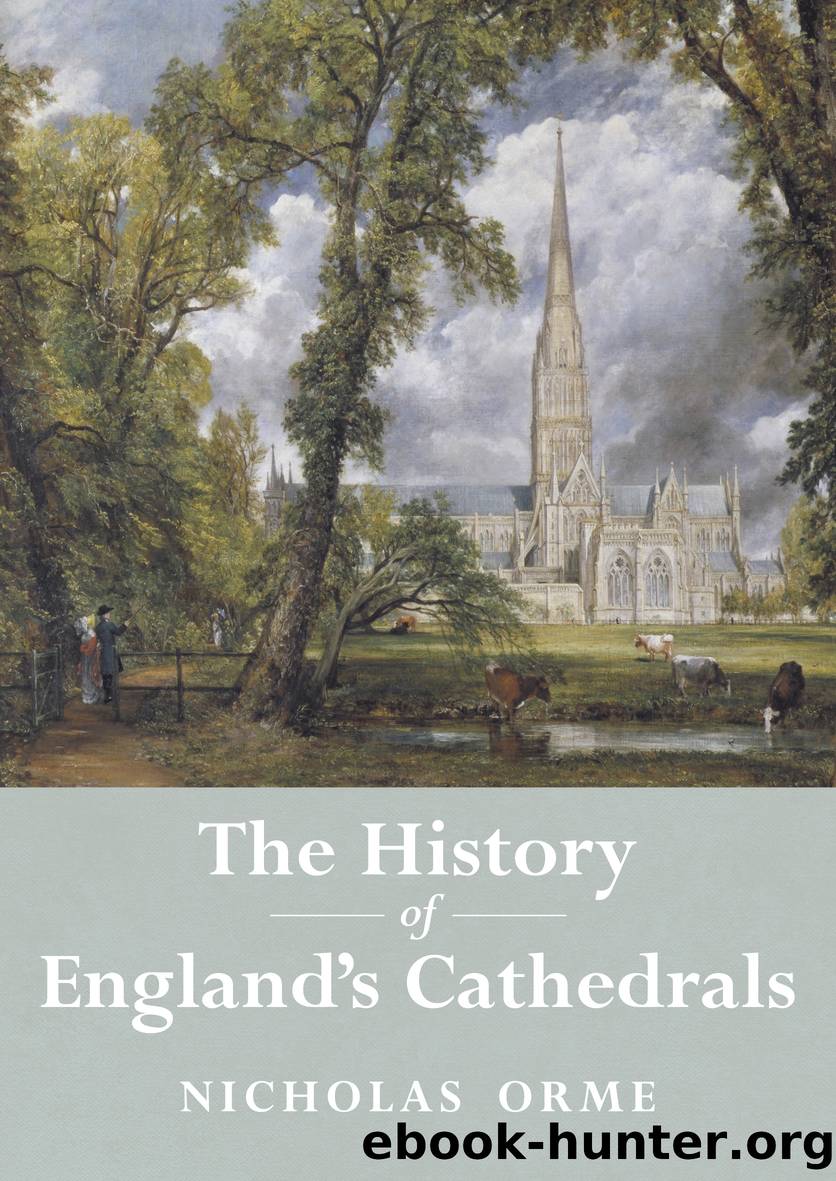The History of England's Cathedrals by Nicholas Orme

Author:Nicholas Orme
Language: eng
Format: epub
ISBN: 9781907605932
Publisher: Impress Books
Published: 2017-08-23T00:00:00+00:00
57. Canalettoâs painting of the lord mayorâs procession on the Thames. It portrays London as Europeâs largest and richest city, with St Paulâs as its pre-eminent modern building.
Non-residence, pluralism, and marriage were inclined to make cathedral clergy more individualistic and less corporate than they had been in previous centuries. A permanent problem was to make them observe their duties. Discipline was hampered by a gentlemanly ethic of tolerance, by the powerful patrons (including the Crown) possessed by many clergy, or by dispensations elicited from the Crown or the bishop. There were no arrangements for retirement and men held their posts till they died. In consequence it was difficult to get rid of an unsatisfactory dean or canon. Thomas Wood, dean of Lichfield (1663â71), quarrelled with both his bishop and his chapter. He refused to call chapter meetings and claimed a right of veto on such meetings. When the bishop, John Hacket, tried to intervene, he refused to appear before him and locked the chapter house. Hacket excommunicated Wood but the archbishop of Canterbury, Gilbert Sheldon, absolved him. Wood was a thoroughly unsatisfactory dean, yet when Hacket died in 1670, Woodâs connections at court got him the bishopric and he then ruled as an unsatisfactory bishop for twenty-one years.27
The lesser members of the cathedral staff tended to imitate their masters. Those of the choir consisted of clergy, lay singers (lay vicars, clerks, or singing men), and choristers. Numbers of clergy were not large: four or five priest vicars in most of the Old Foundations, and six minor canons in the New, although St Paulâs had eighteen vicars some of whom held additional posts in the Chapel Royal or Westminster Abbey. In the Old, the priest vicars formed a separate corporation with their own property, but this did not include the lay vicars and the priests could share the surplus revenues as the canons did. In the New, the minor canons and others were salaried and more subject to the control of the dean and chapter. Priest vicars and minor canons were generally graduates and differed from canons chiefly in coming from families of lesser wealth and fewer connections with men of power. All were awarded a house in the cathedral Close, as were some lay vicars, but the stipends of both grades were generally low and changed little over the centuries. At Lichfield the clergy earned about £22 and their lay colleagues £18.28
In consequence priest vicars and minor canons were pluralists as well. They held small parish churches in the city or nearby countryside, which solved another problem of how to fill these equally modest benefices. On Sundays they juggled their appearances in choir with their duties elsewhere, and like canons, only one or two vicars or minor canons might be on duty on any particular day. Lay singers had other concerns as well, since they were often local tradesmen with musical talents who fitted in their work around their singing. Choristers were the most reliable in their attendance. Exeter and
Download
This site does not store any files on its server. We only index and link to content provided by other sites. Please contact the content providers to delete copyright contents if any and email us, we'll remove relevant links or contents immediately.
| Landmarks & Monuments | Religious Buildings |
| Residential |
Kathy Andrews Collection by Kathy Andrews(10559)
The remains of the day by Kazuo Ishiguro(7577)
Spare by Prince Harry The Duke of Sussex(4225)
Paper Towns by Green John(4179)
The Body: A Guide for Occupants by Bill Bryson(3822)
Be in a Treehouse by Pete Nelson(3236)
Harry Potter and the Goblet Of Fire by J.K. Rowling(3087)
Goodbye Paradise(2983)
Never by Ken Follett(2912)
Into Thin Air by Jon Krakauer(2713)
The Remains of the Day by Kazuo Ishiguro(2629)
The Genius of Japanese Carpentry by Azby Brown(2618)
The Cellar by Natasha Preston(2605)
Drawing Shortcuts: Developing Quick Drawing Skills Using Today's Technology by Leggitt Jim(2537)
120 Days of Sodom by Marquis de Sade(2447)
Architecture 101 by Nicole Bridge(2358)
Machine Learning at Scale with H2O by Gregory Keys | David Whiting(2322)
The Man Who Died Twice by Richard Osman(2312)
Industrial Automation from Scratch: A hands-on guide to using sensors, actuators, PLCs, HMIs, and SCADA to automate industrial processes by Olushola Akande(2149)
